The Flight of Jefferson Davis
Much of the history of Jefferson Davis’s flight from Richmond on April 2, 1865, until his capture in Irwinville, Georgia, on May 10 is imprecise. There was no one whose purpose was to record the actions or the location of the Confederate President. What we have is often from the diaries and recollections of those around him – and from his own writings completed many years later in 1881. This post is about the first day of his flight.
All who were in Richmond on Sunday morning, April 2, described the day as “bright.” Some said beautiful, clear, balmy, or springlike. One chronicler even said peaceful, though that seems unlikely with the skirmishes occurring in nearby Petersburg. For my visit in August 2022, the day was oppressively hot and humid.
On April 2, Davis left the Executive Mansion, now referred to as the White House of the Confederacy, in time for the 11:00 service at St. Paul’s Episcopal Church. The church was about six blocks away.
The Executive Mansion was erected in 1818 at the corner of 12th and K streets – now 1201 East Clay Street. It was built by Dr. John Brokenbrough, president of the Bank of Virginia. The mansion was updated just before 1861 by merchant Lewis Crenshaw adding its third floor, gas lighting, and a bathroom.
Acquired by the Commonwealth of Virginia for use by the President, the mansion was near the edge of the city in the posh Court End neighborhood. It had commanding views of valleys to the north and east as well as Shockoe along the James River to the south. I had expected some of the same, but instead found the mansion on a tiny plot of land surrounded by the high-rise hospital of Virginia Commonwealth University (VCU). I’m sure President Davis would have found the parking garage quite interesting.The Clay Street side of the mansion is Federal and, in my view, not very attractive. The rear, however, has an attractive columned portico. Across a small courtyard there is a welcome center and gift shop located in a VCU building.During Reconstruction, the mansion served as a military headquarters. It was returned to the Commonwealth in 1870 when it became the Central Public School. When the city proposed to replace the building with a new school, local ladies formed the Confederate Memorial Literary Society and received the house from the city in 1894. They opened the home as the Confederate Museum in 1896. In 1976, a new museum opened and restoration of the mansion to the time of the President’s occupancy was begun. It reopened to the public in 1988 in its present form.
That form is quite accurate with rugs and carpets recreated from the many descriptions of the mansion by contemporary visitors. Much of the furniture is original as it was the property of the Commonwealth, not the Davis family. My tour guide was entertaining and supplemented his presentation with a folder of original photographs. Tour reservations are required.Like President Davis, I left the mansion to go to St. Paul’s Episcopal Church at the corner of Grace and Ninth Streets. The Greek Revival building was consecrate in 1845. The style complements the Thomas Jefferson designed temple-form Virginia Capitol across Ninth Street. The church is open for prayer and meditation from 10:00 to 4:00 daily. It also has an underground parking garage.
At the time the Davis family was in Richmond, it was customary for parishioners to buy or rent their pews. Davis had pew #63. He shared that pew with Robert E. Lee when General Lee was in the city. That pew remains available to visitors, and I took the opportunity to sit there for my meditation.
In 2015, the congregation removed all symbols related to “the lost cause.” This included several plaques and changes to some stained-glass windows. There is no visible evidence of Davis’s membership or attendance. The church and Richmond in general are becoming more and more devoid of their history.
While in pew #63 on April 2, 1865, Davis received a telegram from General Lee announcing his withdrawal from Petersburg and the need to evacuate Richmond. According to Davis, he then arose, went to his office, assembled his cabinet, and instructed them to be ready to leave that night at 8:00.
The Confederacy’s Executive Office Building was at 1000 East Main Street with Davis’s office on the third floor. That same building is now the Lewis F. Powell, Jr., United States Courthouse. (Powell was a Supreme Court Justice at the time of Roe v. Wade.)
Davis then returned to the Executive Mansion to pack his personal belongings and make final arrangements for the contents of the house. He reportedly left for the Richmond and Danville Railroad (R&D RR) Station at dusk – about 7:00.
Richmond presently has an historic train station – the Main Street Station and Trainshed. It is a familiar sight to anyone traveling I-95 North through Richmond. But that building was not erected until 1901.
Finding the site of the R&D station proved a bit of a challenge, especially because the fleeing Confederates burned the adjoining area, the depot, and parts of the railroad bridge.
Old maps suggest the R&D depot was on Virginia Street just 100 feet or so from the James River. That site that now contains a high-rise condo. The R&D also had freight yards a little further along 14th Street. It seems the Southern Railroad, the R&D’s successor, erected a newer building on that site, shown below.
The actual time the Presidential train left Richmond for Danville is uncertain. While an 8:00 departure was planned, the crush of people and the many last-minute details slowed things down. Some say actual departure was at 10:00 while others say 11:00 or even midnight. Due to the poor condition of the railroad and frequent stops, the President did not arrive in Danville until late the following afternoon.
Richmond to Danville by car takes less than three hours. My trip took much longer as I searched for the remnants of the R&D RR.


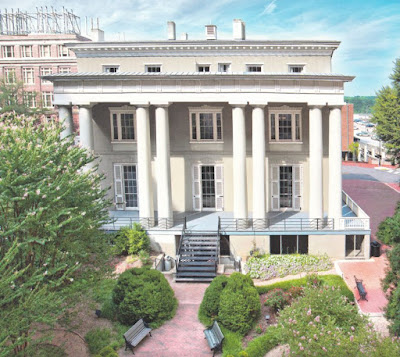

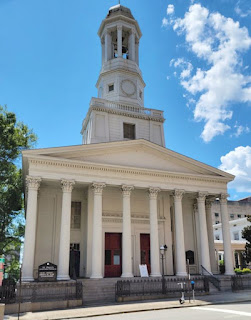
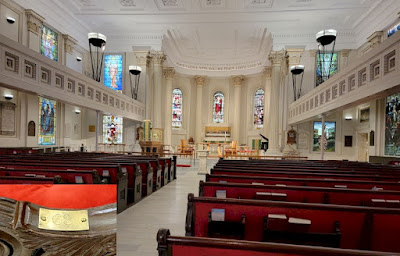
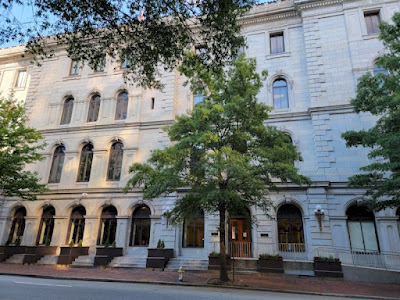


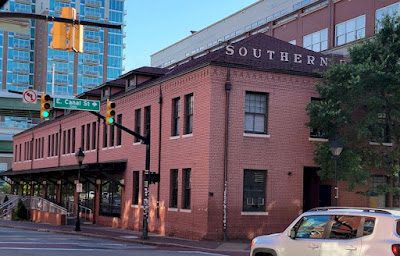
No comments:
Post a Comment